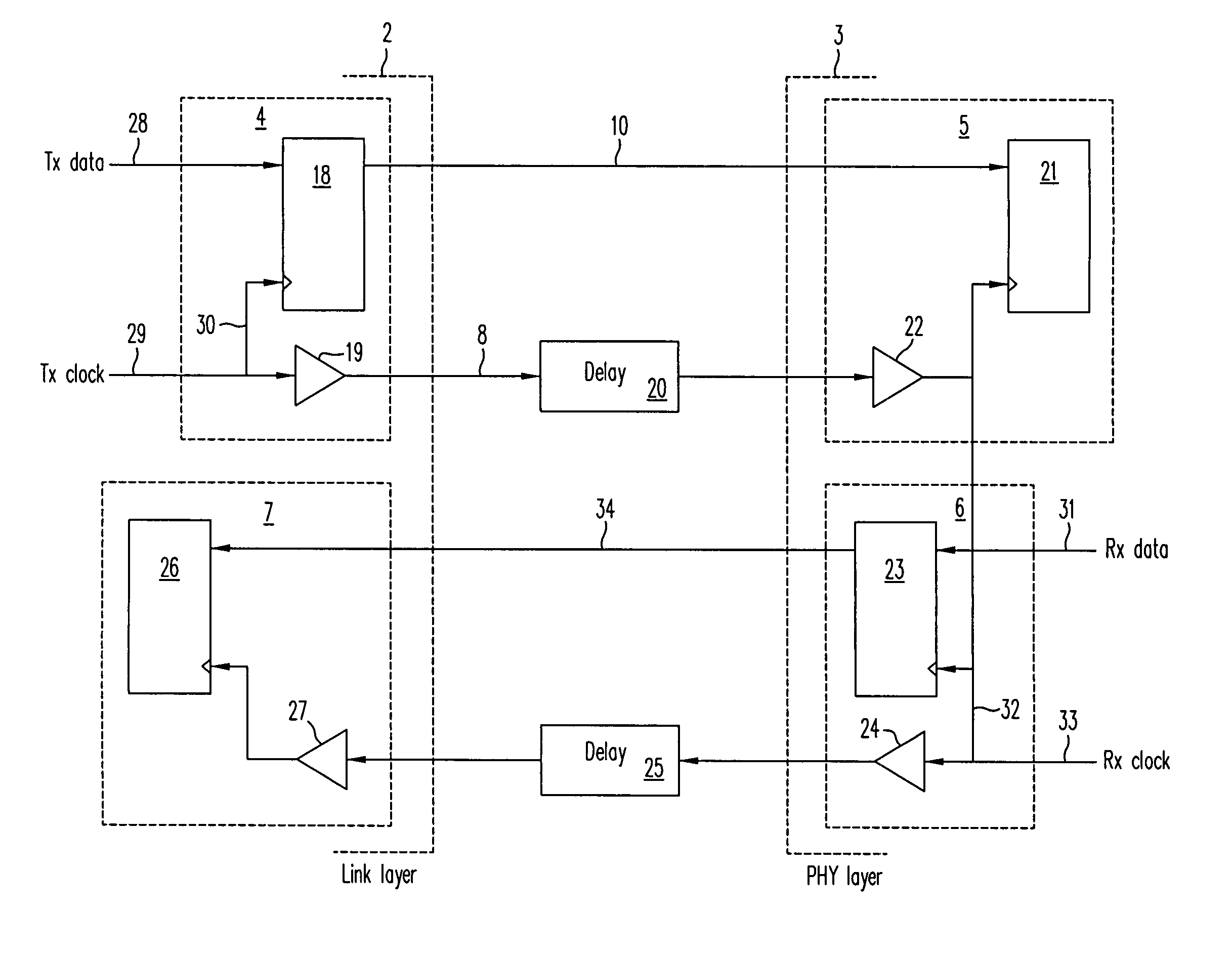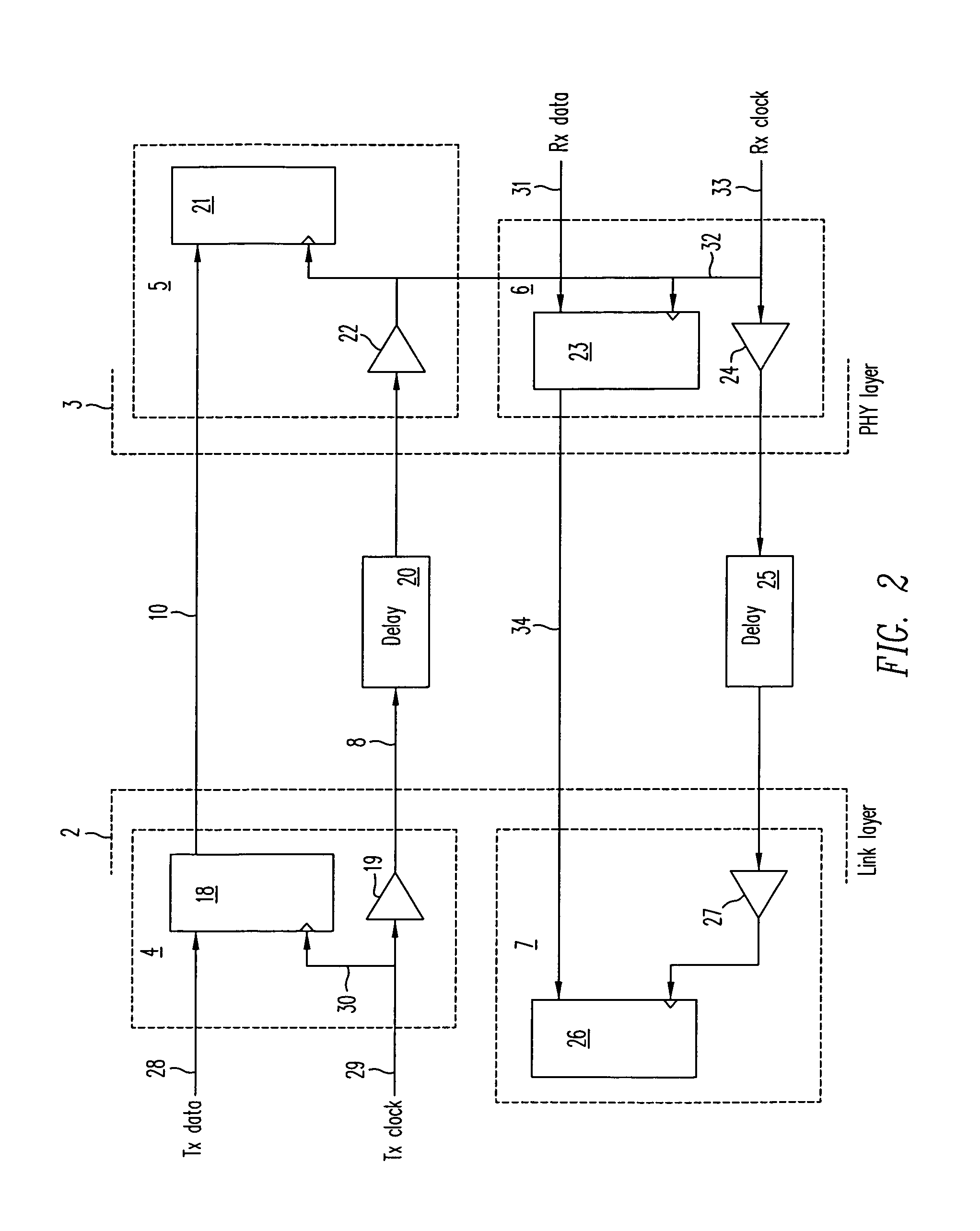Method and system for source synchronous clocking
a source and clocking technology, applied in the field of synchronous clocking source, to achieve the effect of more accurate recovery of transmitted data over a network
- Summary
- Abstract
- Description
- Claims
- Application Information
AI Technical Summary
Benefits of technology
Problems solved by technology
Method used
Image
Examples
Embodiment Construction
[0015]FIG. 1 is a block diagram of a source synchronous clocking system 1 for transferring signals between a link layer 2 to a PHY layer 3. The source synchronous clocking system 1 comprises a transmit (Tx) clock domain 4 and a receive (Rx) clock domain 7 in the link layer 2, and a transmit clock domain 5 and a receive clock domain 6 in the PHY layer 3. The link layer 2 comprises an ATM layer or frame layer. From the link layer 2 to the PHY layer 3, the following signals are transferred: a transmit clock 8, a transmit control 9, a transmit data 10, and a receive flow control 11. From the PHY layer 3 to the link layer 2, the following signals are transferred: a receive clock 14, a receive control 15, a receive data 16, and a transmit flow control 60.
[0016]The source synchronous clocking system 1 transfers information in two directions, a transmit direction and a receive direction. In the transmit direction, there is a transmit source which comprises a transmit clock domain 4 and a tr...
PUM
 Login to View More
Login to View More Abstract
Description
Claims
Application Information
 Login to View More
Login to View More - R&D
- Intellectual Property
- Life Sciences
- Materials
- Tech Scout
- Unparalleled Data Quality
- Higher Quality Content
- 60% Fewer Hallucinations
Browse by: Latest US Patents, China's latest patents, Technical Efficacy Thesaurus, Application Domain, Technology Topic, Popular Technical Reports.
© 2025 PatSnap. All rights reserved.Legal|Privacy policy|Modern Slavery Act Transparency Statement|Sitemap|About US| Contact US: help@patsnap.com



